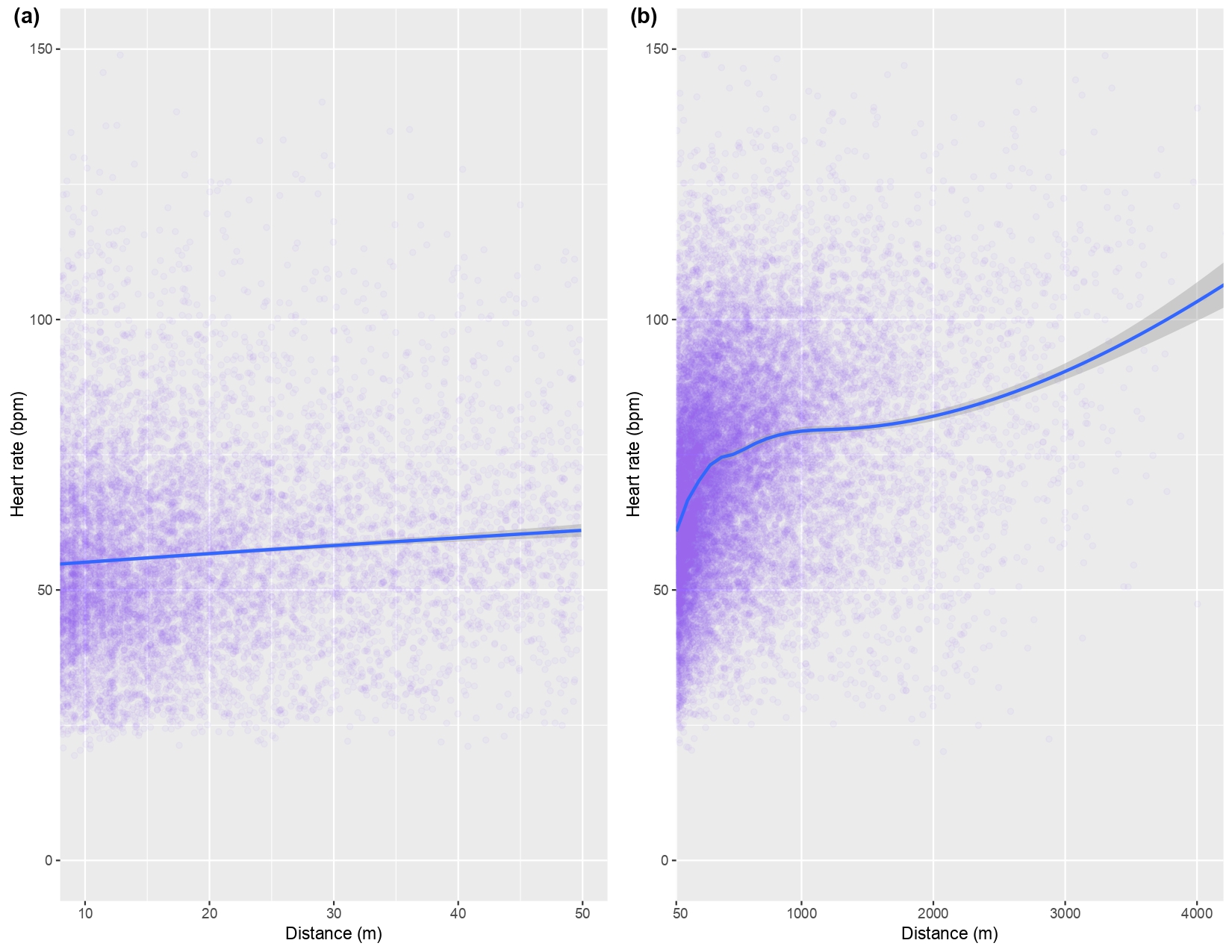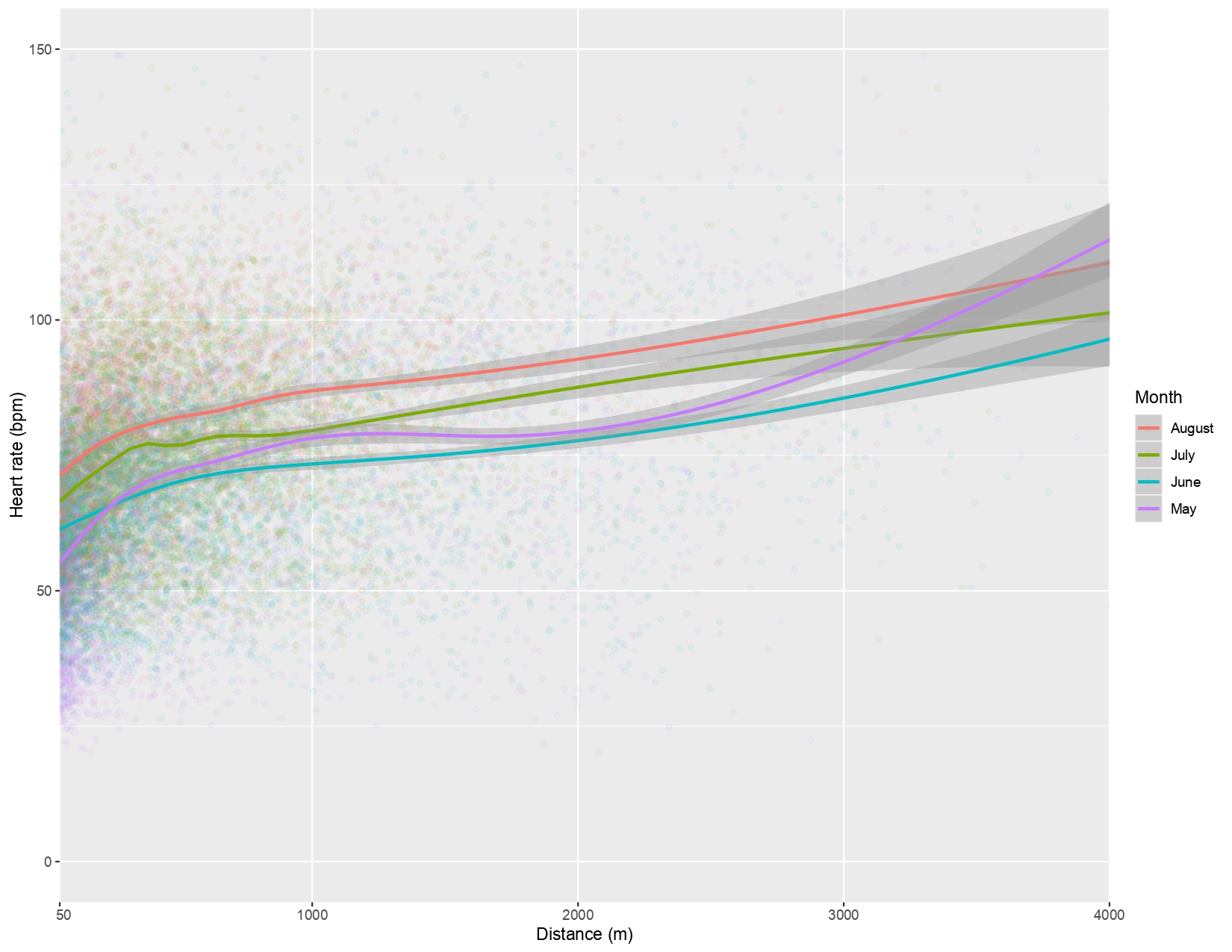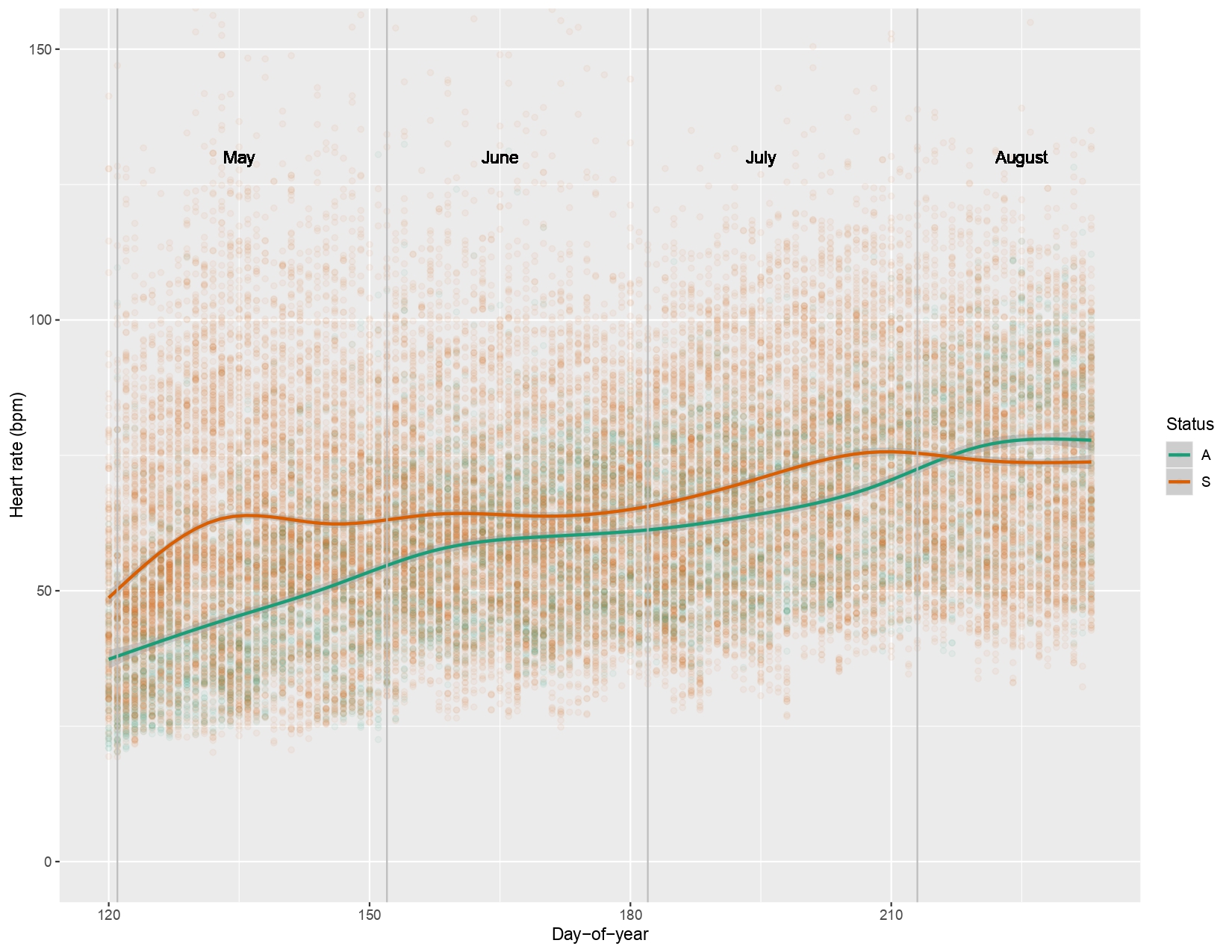Background: Understanding animal movement facilitates better management and conservation (Ordiz et al., 2016). The link between movement and physiology holds clues to the basic drivers of animal behaviours (Ropert-Coudert et al., 2012). In bears, heart rate increases with the metabolic rate during the active phase (Laske et al., 2018). Their movement and heart rate change at seasonal and daily scales and can also depend on environmental factors (Ditmer et al., 2015). Their behaviour is therefore flexible in activity patterns with high individual variations (Hertel et al., 2017). The aim of this study was to establish the relationship between heart rate and distance travelled, and test whether this relationship was influenced by environmental (e.g., time of year and time of day) and biological (e.g., reproductive status, sex, body mass and age of the bears) factors. Methods: We analysed data of distance travelled and heart rate of 15 GPS-collared brown bears, both males and females, equipped with cardiac loggers in the south of Sweden in 2014 to 2017. For chemical immobilization, the bears were anesthetized with medetomidine, tiletamine-zolazepam and ketamine with doses ranging from 1.5 – 17.1 mg/kg. Results: Heart rate increased with distances travelled exceeding 50m in an hour (long distances) (Fig. 1), but this correlation depended on the day-of-year with higher heart rate in August than in May (Fig. 2). Bears accompanied by cubs had lower heart rate (59.6±18 (mean±SD) beats per minute, n=5) than solitary bears (66.6±21 beats per minute, n=18), especially in May (Fig. 3). When movement was minimum (<50m in an hour, short distances) (Fig. 1), heart rate was not related to distance travelled and was very variable, regardless of the months (Fig. 4). Conclusions: Our findings suggest that heart rate increases with long distances travelled, but varies with day-of-year and reproductive status, depending on the metabolic rate. Studying the change in heart rate in bears can help to evaluate their seasonal rhythms and how different factors affect them. This study illustrates the usefulness of combined bio-logging proxies, i.e., movement and heart rates in our case, in animal ecology. Figures' legend: Fig. 1 Scatter plots of distance travelled (m) against heart rate (bpm) during (a) short distances and (b) long distances in brown bears in southcentral Sweden (n=15) (Pearson, P50m) against heart rate (bpm) grouped by months in brown bears in southcentral Sweden (n=15) (Linear mixed effect, P<0.001). Fig. 3 Scatter plot of day-of-year against heart rate (bpm) grouped by reproductive status (accompanied bears (A, n=5) and solitary bears (S, n=18)), in brown bears in southcentral Sweden (Linear mixed effect, P<0.001). Fig. 4 Scatter plot of short distances travelled (<50m) against heart rate (bpm) grouped by months in brown bears in southcentral Sweden (n=15) (Linear mixed effect, P=0.70).
Future Physiology 2020 (Virutal) (2020) Proc Physiol Soc 46, OC01
Oral Communications: Movement and heart rate in the Scandinavian brown bear (Ursus arctos)
Leslie Blanchet1, Boris Fuchs1, Ole-Gunnar Støen2, Audrey Bergouignan3, Andrés Ordiz4, Timothy G. Laske5, Jon M. Arnemo1, 6, Alina L. Evans1
1 Department of Forestry and Wildlife Management, Faculty of Applied Ecology and Agricultural Sciences, Inland Norway University of Applied Sciences, Koppang, Norway 2 Norwegian Institute for Nature Research, Trondheim, Norway 3 Institut Pluridisciplinaire Hubert Curien, CNRS, University of Strasbourg, Strasbourg, France 4 Faculty of Environmental Sciences and Natural Resource Management, Norwegian University of Life Sciences, Ås, Norway 5 Department of Surgery, University of Minnesota, B172 Mayo, MMC 195, Minneapolis, The United States of America 6 Department of Wildlife, Fish and Environmental Studies, Swedish University of Agricultural Sciences, Umeå, Sweden
View other abstracts by:
Where applicable, experiments conform with Society ethical requirements.




